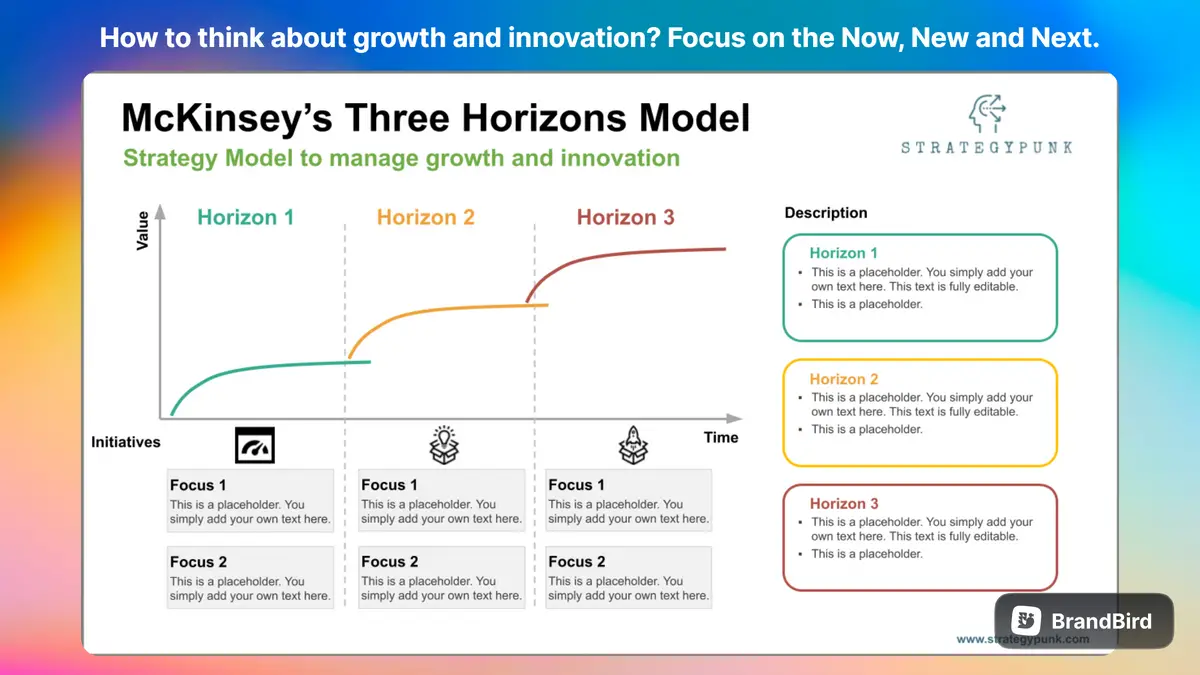Global Bites: PESTLE Insights into Nestlé (Free PPT)
Download our free PPT template for in-depth PESTLE insights into Nestlé's global strategy. Learn more today!

Imagine biting into a KitKat bar or sipping a steaming cup of Nescafé coffee. Those iconic tastes and aromas are brought to you by Nestlé - the world's largest food and beverage company.
From chocolate and coffee to baby food and bottled water, Nestlé's products grace kitchen tables across the globe.
But have you ever wondered about the forces shaping this food and drink giant?
This blog post will take you through Nestlé's landscape using the PESTLE analysis framework.
We'll explore how political, economic, social, technological, legal, and environmental factors influence Nestlé's strategies and operations worldwide.
Nestlé PESTLE Step-by-Step Analysis
In this section, we'll methodically break down the Political, Economic, Social, Technological, Legal, and Environmental factors that impact one of the world's leading food and beverage companies.
As we dissect each element, we aim to provide insights that reveal how Nestlé navigates complex global markets, adapts to changing consumer behaviors, leverages technology for innovation, complies with stringent regulations, and addresses environmental challenges.
Whether you're a student, analyst, or curious reader, this step-by-step analysis will enhance your understanding of how macro-environmental factors influence Nestlé's strategies and operations, paving the way for informed discussions and deeper insights.
Political Factors
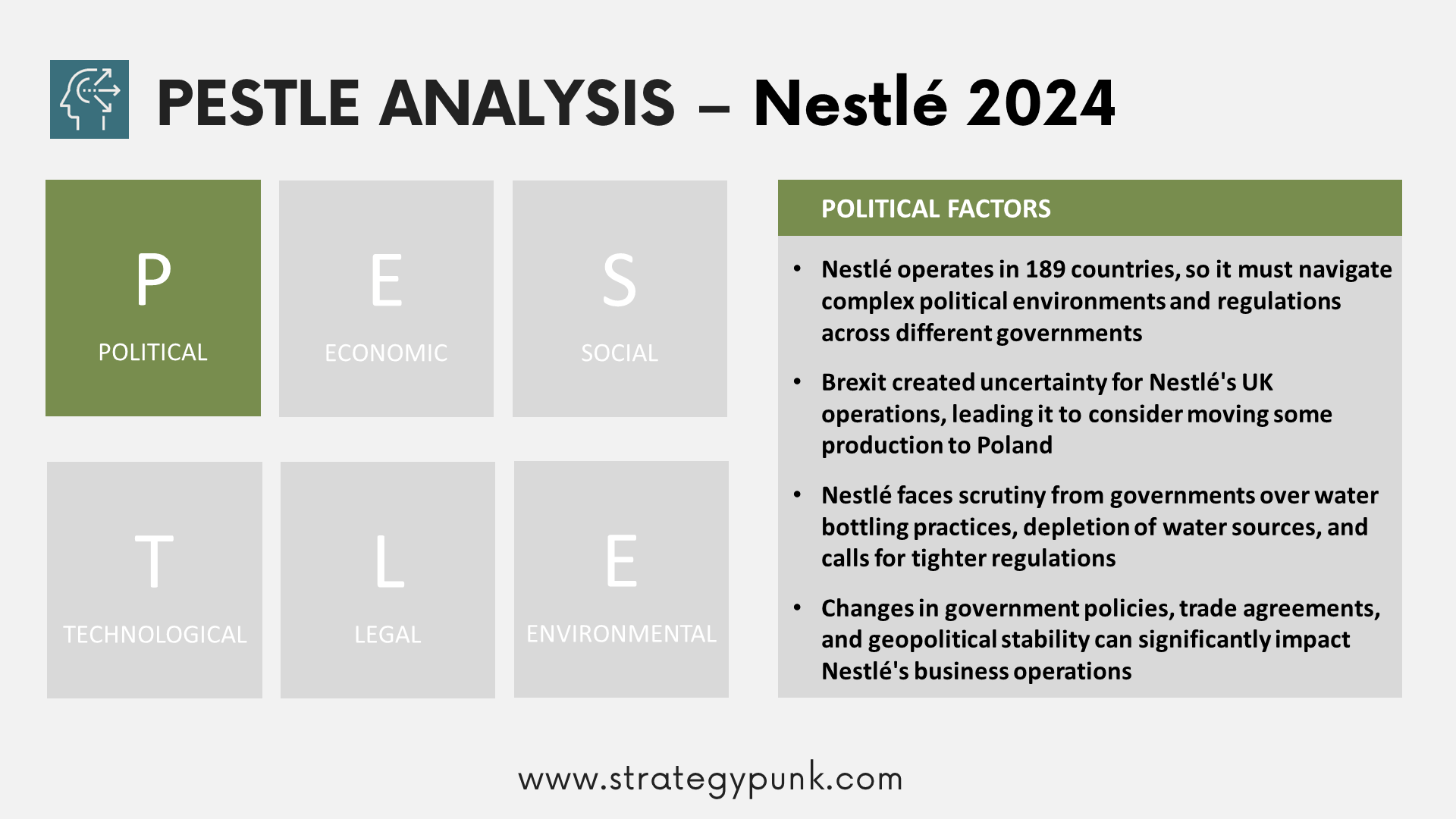
As a multinational corporation operating in 189 countries, Nestlé must navigate a complex web of political environments. Changes in government policies, regulations, and trade agreements can significantly impact its business.
For instance, Brexit created uncertainty for Nestlé's operations in the UK. The company even considered moving some production facilities to Poland due to concerns over potential trade barriers and workforce challenges.
Moreover, Nestlé faces scrutiny from governments and advocacy groups over its water bottling practices. The company has been accused of depleting water sources, particularly in drought-prone areas, sparking protests and calls for tighter regulations.
Key takeaways:
- Nestlé operates in 189 countries, so it must navigate complex political environments and regulations across different governments
- Brexit created uncertainty for Nestlé's UK operations, leading it to consider moving some production to Poland
- Nestlé faces scrutiny from governments over water bottling practices, depletion of water sources, and calls for tighter regulations
- Changes in government policies, trade agreements, and geopolitical stability can significantly impact Nestlé's business operations
Economic Factors
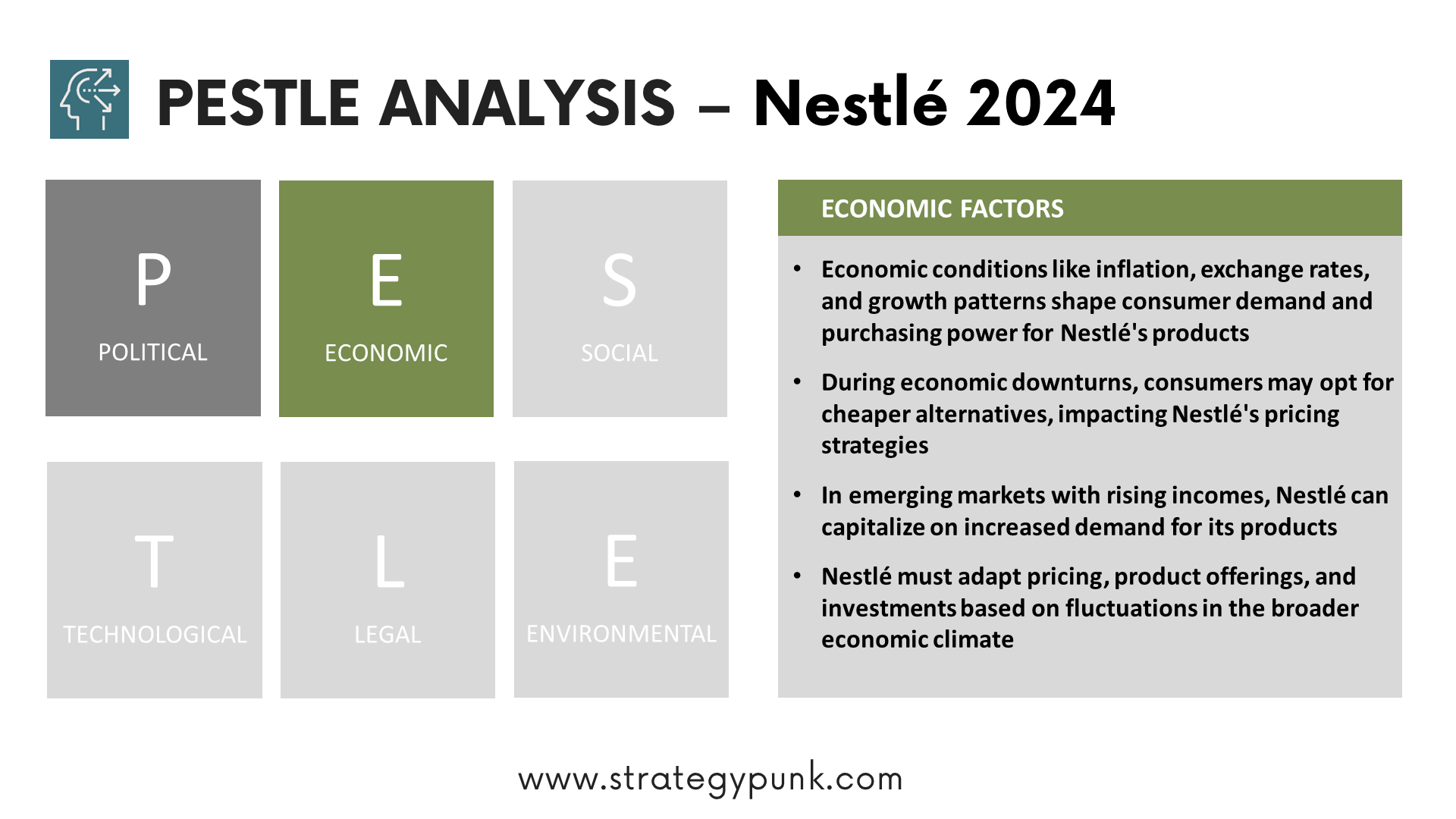
Economic conditions are crucial in shaping consumer demand and purchasing power for Nestlé's products. The company must adapt to inflation rate fluctuations, exchange rates, and economic growth patterns across its diverse markets.
During periods of economic downturn, consumers may opt for cheaper alternatives or reduce discretionary spending on non-essential items like confectionery and premium coffee. Nestlé must then adjust its pricing strategies and product offerings accordingly.
Conversely, in regions experiencing robust economic growth and rising disposable incomes, Nestlé can capitalize on increased demand for its products, particularly in emerging markets like Asia and Africa.
Key takeaways:
- Economic conditions like inflation, exchange rates, and growth patterns shape consumer demand and purchasing power for Nestlé's products
- During economic downturns, consumers may opt for cheaper alternatives, impacting Nestlé's pricing strategies
- In emerging markets with rising incomes, Nestlé can capitalize on increased demand for its products
- Nestlé must adapt pricing, product offerings, and investments based on fluctuations in the broader economic climate
Social Factors
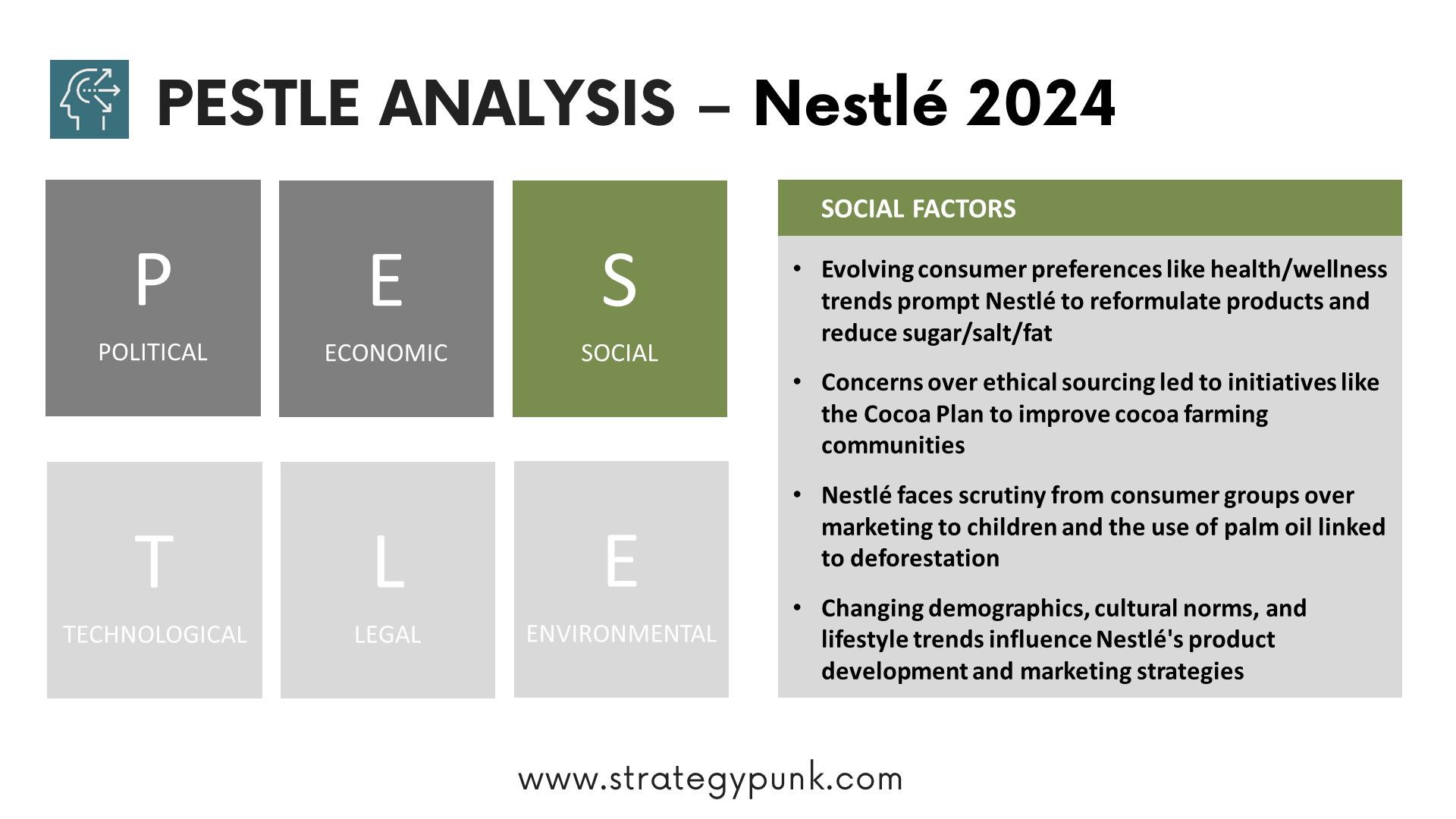
Nestlé closely monitors evolving consumer preferences and societal trends influencing food choices and consumption habits. The growing emphasis on health and wellness has prompted the company to reformulate many products, reducing sugar, salt, and fat content.
Additionally, concerns over sustainability and ethical sourcing have led Nestlé to implement initiatives like its Cocoa Plan, which aims to improve the lives of cocoa farmers and their communities while promoting sustainable farming practices.
Consumer advocacy groups also scrutinize the company over issues such as marketing practices targeting children and the use of palm oil linked to deforestation.
Key takeaways:
- Evolving consumer preferences like health/wellness trends prompt Nestlé to reformulate products and reduce sugar/salt/fat
- Concerns over ethical sourcing led to initiatives like the Cocoa Plan to improve cocoa farming communities
- Nestlé faces scrutiny from consumer groups over marketing to children and the use of palm oil linked to deforestation
- Changing demographics, cultural norms, and lifestyle trends influence Nestlé's product development and marketing strategies
Technological Factors
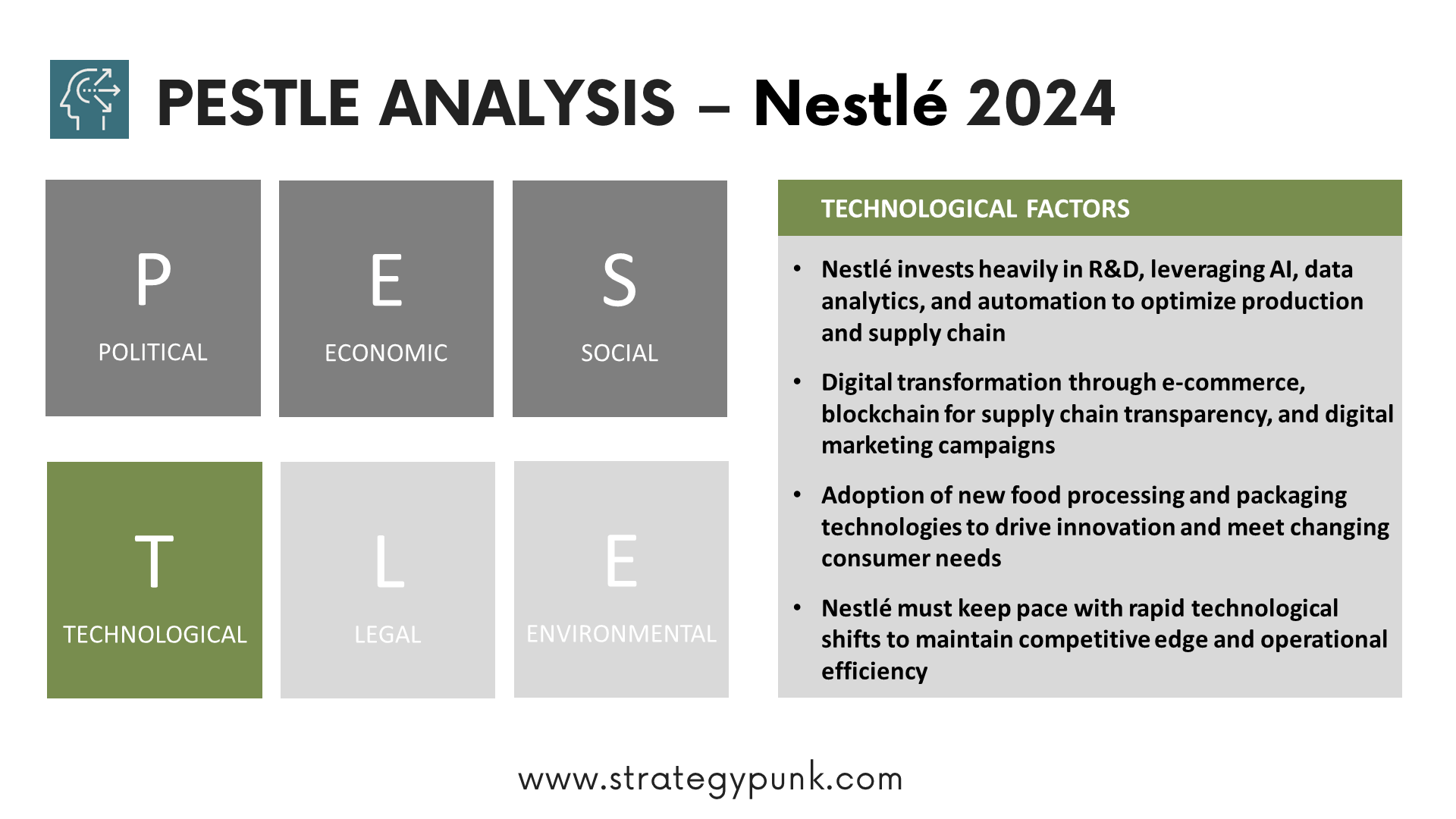
Technology is vital in Nestlé's operations, from optimizing production processes to enhancing customer engagement through e-commerce platforms and digital marketing campaigns.
The company invests heavily in research and development, leveraging technologies like artificial intelligence and data analytics to develop new products, improve food safety and quality, and streamline supply chain operations.
Nestlé has also embraced digital transformation, using technologies like blockchain to enhance transparency and traceability throughout its supply chain, from farm to fork.
Key takeaways:
- Nestlé invests heavily in R&D, leveraging AI, data analytics, and automation to optimize production and supply chain
- Digital transformation through e-commerce, blockchain for supply chain transparency, and digital marketing campaigns 5
- Adoption of new food processing and packaging technologies to drive innovation and meet changing consumer needs
- Nestlé must keep pace with rapid technological shifts to maintain competitive edge and operational efficiency
Legal Factors
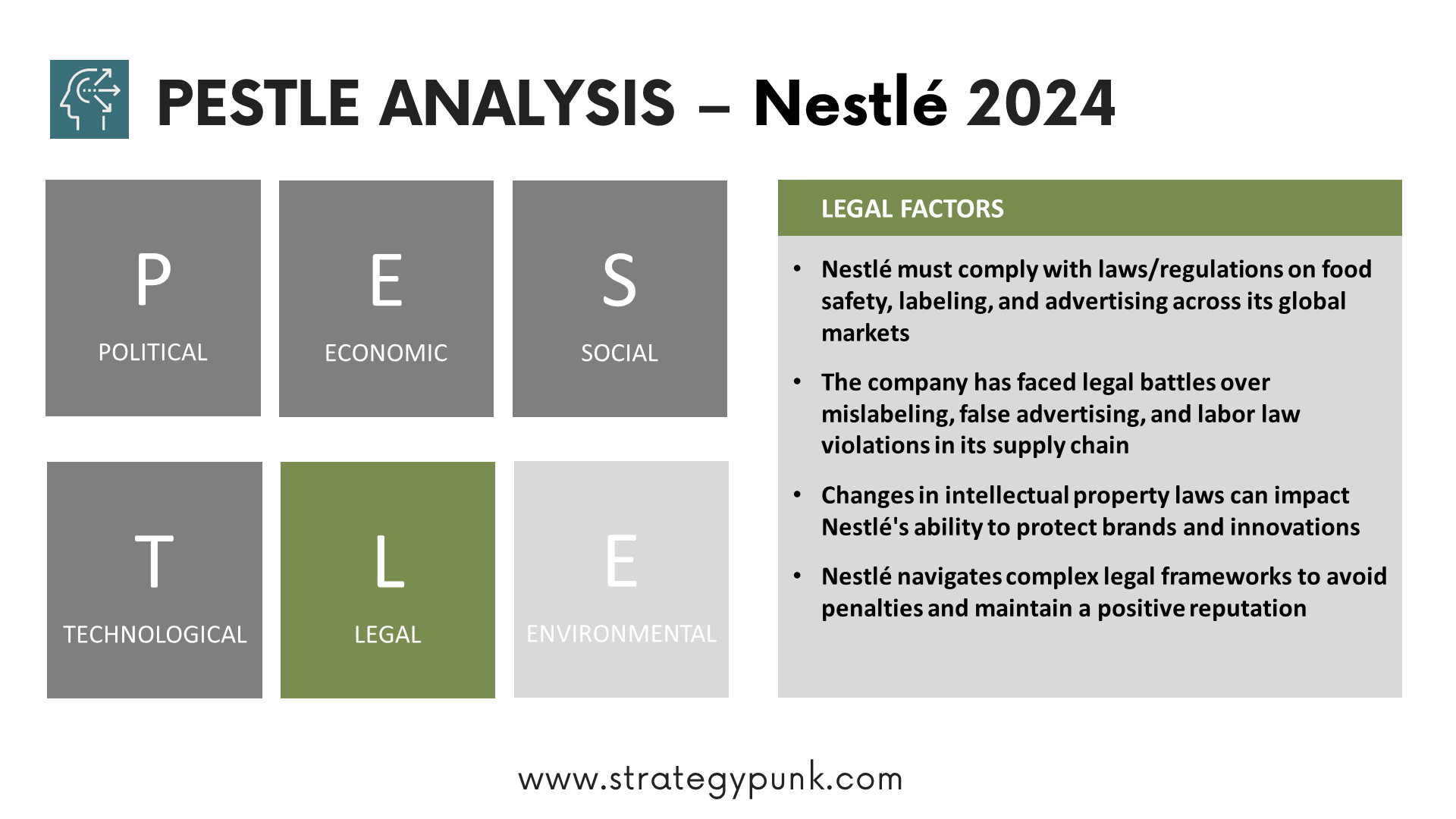
As a global food and beverage company, Nestlé must comply with many laws and regulations governing food safety, labeling, advertising, and environmental standards across its markets.
The company has faced legal challenges and fines over mislabeling, false advertising claims, and labor law violations in its supply chain. These legal battles can tarnish Nestlé's reputation and result in significant financial penalties.
Moreover, changes in intellectual property laws and patent regulations can impact Nestlé's ability to protect its brands and innovations, potentially affecting its competitive advantage.
Key takeaways:
- Nestlé must comply with laws/regulations on food safety, labeling, and advertising across its global markets
- The company has faced legal battles over mislabeling, false advertising, and labor law violations in its supply chain
- Changes in intellectual property laws can impact Nestlé's ability to protect brands and innovations
- Nestlé navigates complex legal frameworks to avoid penalties and maintain a positive reputation
Environmental Factors
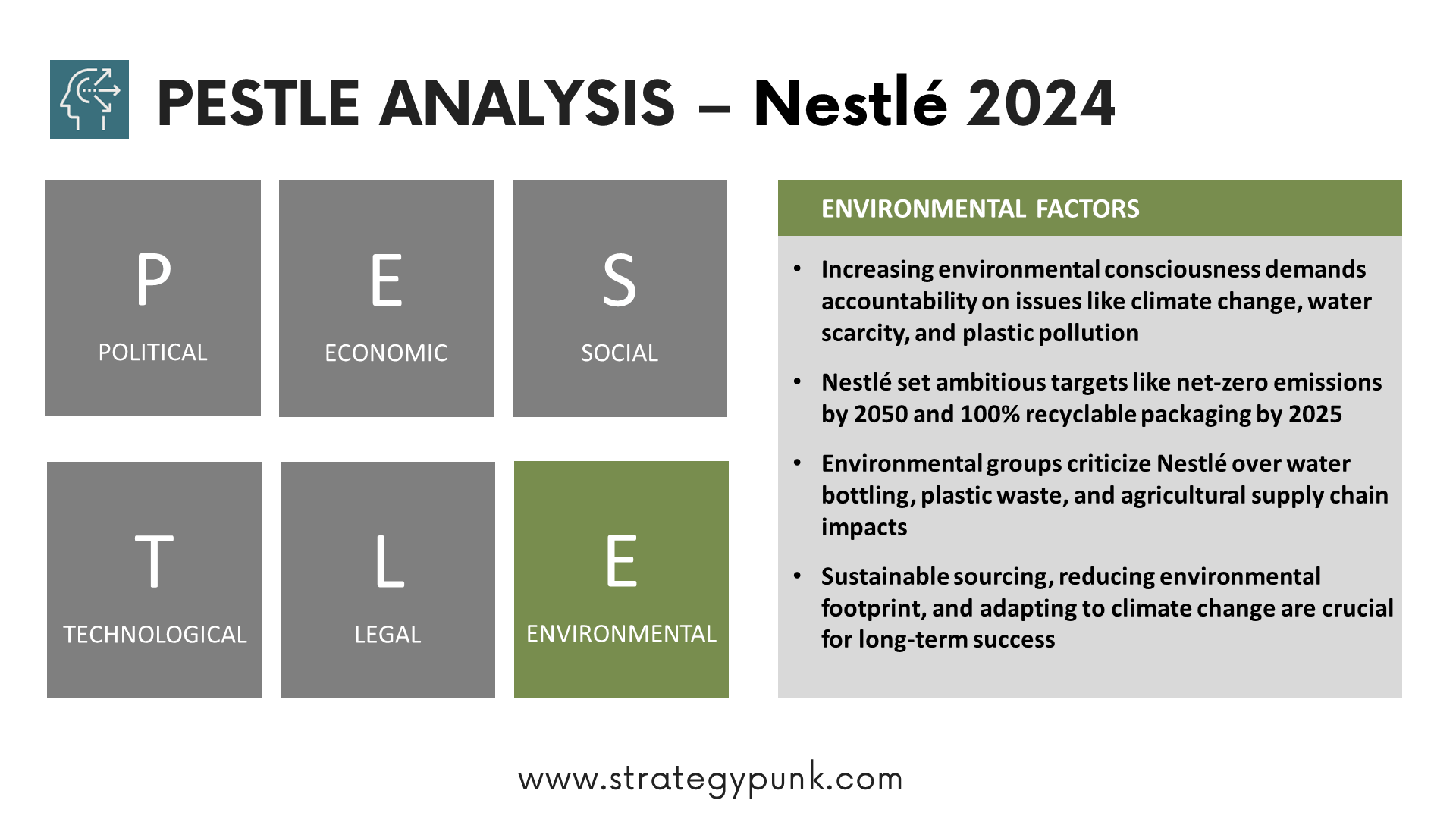
Environmental sustainability is a growing concern for Nestlé, as consumers and stakeholders demand greater accountability and action on climate change, water scarcity, and plastic pollution.
The company has set ambitious targets to reduce its environmental footprint, such as achieving net-zero greenhouse gas emissions by 2050 and making 100% of its packaging recyclable or reusable by 2025.
However, Nestlé is criticized by environmental groups for its water bottling practices, plastic waste generation, and the ecological impact of its agricultural supply chain, particularly in sensitive ecosystems like rainforests.
Navigating these environmental challenges will be crucial for Nestlé's long-term sustainability and reputation.
Key takeaways:
- Increasing environmental consciousness demands accountability on issues like climate change, water scarcity, and plastic pollution 10
- Nestlé set ambitious targets like net-zero emissions by 2050 and 100% recyclable packaging by 2025 10
- Environmental groups criticize Nestlé over water bottling, plastic waste, and agricultural supply chain impacts
- Sustainable sourcing, reducing environmental footprint, and adapting to climate change are crucial for long-term success
Wrapping Up
The PESTLE analysis reveals many external forces shaping Nestlé's strategies and operations worldwide.
From political and economic dynamics to social and technological trends and legal and environmental considerations, the company must continuously adapt and innovate to maintain its position as a global leader in food and beverage.
By understanding and proactively addressing these PESTLE factors, Nestlé can better navigate the challenges and opportunities that lie ahead. Its products will continue to delight consumers worldwide while contributing to a more sustainable and equitable food system.
Nestlé PESTLE Analysis PowerPoint Template
free and fully editable Nestlé PESTLE PPT template
Our Nestlé PESTLE Analysis templates, available in PDF and PowerPoint formats, provide an in-depth look into the political, economic, social, technological, legal, and environmental factors influencing Nestlé's global business operations.
Designed for ease of use and comprehensive analysis, these templates are perfect tools for strategists, marketers, and academic professionals to understand Nestlé's external business environment.
They offer a structured framework to explore the opportunities and threats facing one of the world's leading technology companies.
Nestlé PESTLE Analysis PowerPoint Template
Nestlé PESTLE Analysis PDF Template
Discover more
Clickworthy Resources
The Basics of a PEST / PESTLE Analysis: A Complete Guide (Plus FREE Template)
The Basics of a PEST / PESTLE Analysis: A Complete Guide (Plus FREE PowerPoint and Google SlidesTemplate)
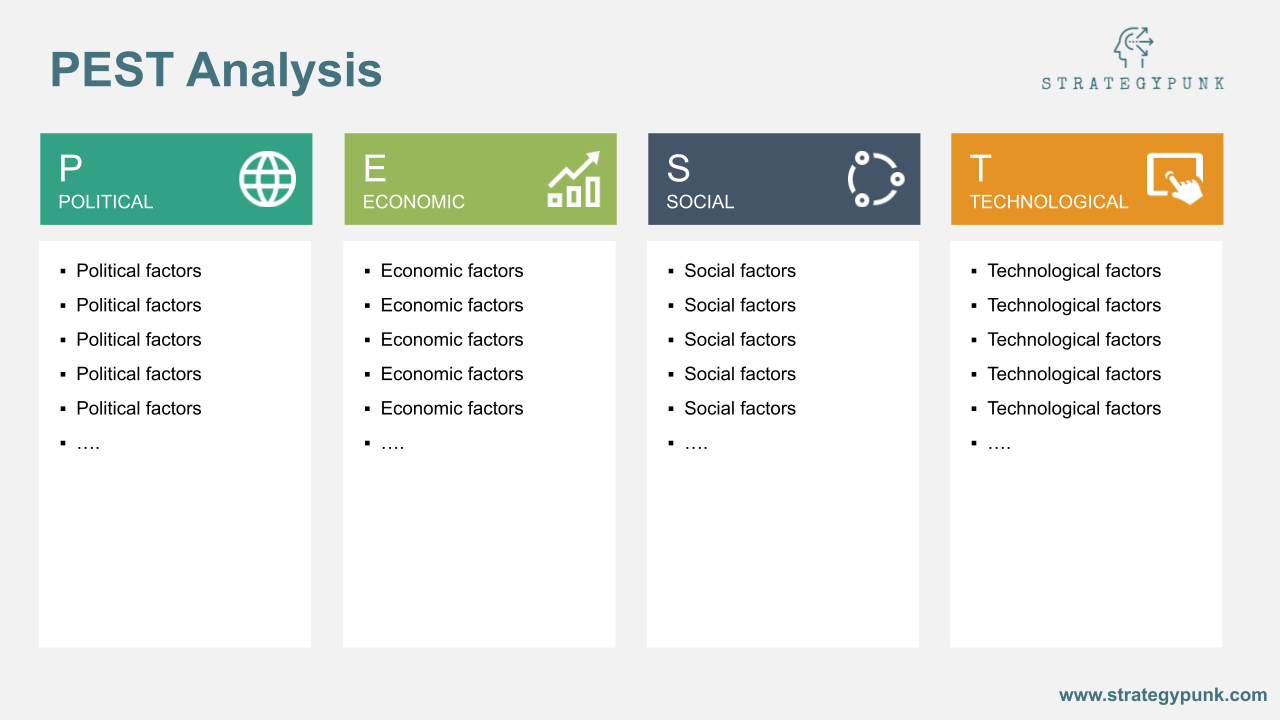
Strategic Insights 2024: A SWOT Analysis of Nestle (Plus Free PPT)
Explore Nestle's strategic outlook with our SWOT analysis for 2024.
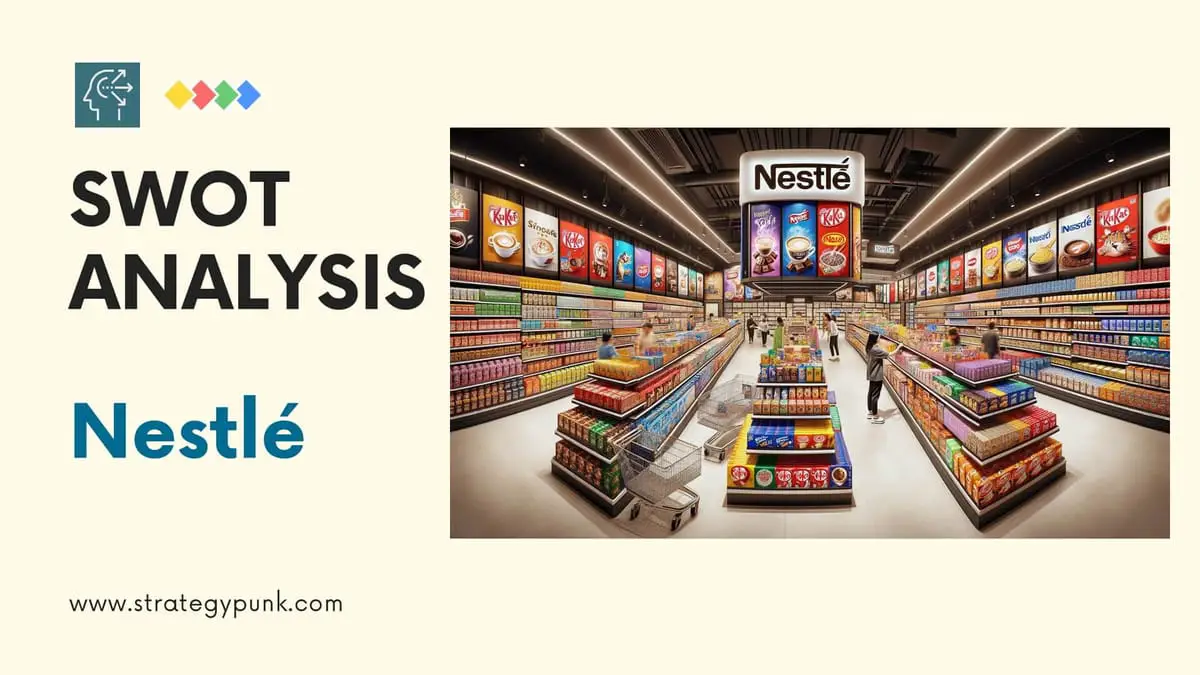
McKinsey's 3 Horizons Framework: Free PowerPoint Template
How to think about growth and innovation? Focus on the Now, New and Next. Free slide deck in PowerPoint and Google Slides format.
